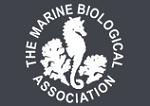APHOTOMARINE
An educational resource dedicated mainly to the photography
and diversity of marine life that can be found in coastal waters
and intertidal areas of Great Britain and Ireland by David Fenwick.

Lepas (Anatifa) anatifera
- on fishing float 1
Goose or Stalked barnacles
Lepas (Anatifa) anatifera
- on fishing float 2
Above images were taken of Lepas anatifera on a lobster or long line float at Praa Sands, Cornwall. 10.01.16.
Goose or Stalked barnacles
Lepas (Anatifa) anatifera
- on metal fishing float 1
Goose or Stalked barnacles
Lepas (Anatifa) anatifera
- on metal fishing float 2
Goose or Stalked barnacles
Lepas (Anatifa) anatifera
- on metal fishing float 3
Goose or Stalked barnacles
Lepas (Anatifa) anatifera
- on metal fishing float 4
Above images were taken of Lepas anatifera on a metal fishing float at Sennen Cove, Cornwall. 14.12.15.
Goose or Stalked barnacles
Lepas species
- barnacles 1
Goose or Stalked barnacles
Lepas species
- barnacles 2
Goose or Stalked barnacles
Lepas species
- barnacles 3
Goose or Stalked barnacles
Lepas species
- barnacles 4
Goose or Stalked barnacles
Lepas species
- barnacles 5
Goose or Stalked barnacles
Lepas species
- barnacles 6
Goose or Stalked barnacles
Lepas species
- barnacles on buoy 1
Goose or Stalked barnacles
Lepas species
- barnacles on minature bottle 1
Goose or Stalked barnacles
Lepas species
- barnacles on fish box 1
Goose or Stalked barnacles
Lepas species
- barnacles on a fishing float 1
Goose or Stalked barnacles
Lepas species
- barnacles on a fishing float 2
There are three species of Goose or Stalked barnacle in the images; they include Lepas hilli, Lepas pectinata and Lepas anatifera.
Images of the following species of Gooseneck barancles can be found on this site -
Dosima fascicularis
Lepas (Anatifa) anatifera
Lepas (Anatifa) hillii
Lepas (Anatifa) pectinata
Images of these pelagic barnacles were taken on the high tide mark at Long Rock, Penzance, Cornwall; 03.11.10 and 18.11.10. Strong south-westerly winds had washed ashore a large plastic lid that the animals were attached to, 15 days later a buoy was found, which also had three species of these barnacles.
This is a tropical / sub-tropical species that comes to the UK shores on flotsam via the Gulf Stream. UK waters are too cold for these species to survive and breed.
APHOTOMARINE supports open source data recording and sharing for the benefit of wildlife, recorders, research, science and education. The project recommends the following websites and works with the following bodies and organisations.
The Marine Biological Association or MBA, based in Plymouth, is one of the world’s longest-running societies dedicated to promoting research into our oceans and the life they support. Since 1884 the MBA has been providing a unified, clear, independent voice on behalf of the marine biological community.It has a growing membership in over 40 countries.
The National Biodiversity Network or NBN is a charity that supports open source data sharing and recording supporting conservation, science and education. "Why do recorders need open source?". Simply because it supports the core values of wildlife recording and the free use of records and data over a very wide network that includes partners like the Natural History Museum.
The taxonomy used here is based on that of the following database, which is also used by the MBA, NHM and the NBN.
The World Register of Marine Species or WoRMS.

